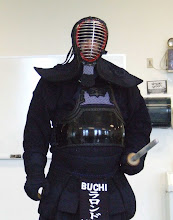As of late the amount of work hitting our team has been staggering. The initial response by the team is that we are overworked. Fair enough….. or is it?
I have always struggled with this comment. My approach is and has always been, if you do it right and pay attention then you rarely have to go back and fix it. If this is a truism then the work you are doing is moving you forward not holding you back.
Since not many people give this argument much thought or at least my current team doesn’t, I thought I would take this blog to express my position or stance.
To solve a problem you have to first acknowledge there is a problem. Seems simple but it is not that simple based on the observations I make on a regular basis. Frequently, I have been known to say in passing “see a problem, fix a problem”. Typically this is something as simple as fixing a colleagues tangled phone cord when you borrow their phone. A simple gesture, but one I consistently do, just because. Other simple ones like filling the paper tray of a printer you walked by because you heard the error tones. Holding the door open for someone whose hands are full should not be something that has to be “memo’d” to be done.
Yet, as I look around I see most of us plodding along and doing as we are told. This is a huge burden for the person that is responsible for telling us work needs to be done. I can’t remember a time when my boss had to explicitly tell me to do work. Sure, we have meetings to discuss priorities and new projects, but I would be insulted if he had to tell me do something that is clearly in my implicit mandate. An example is doing the annual Disaster Recover Plan. His job is ask what occurred, or to make a decision on if we are going to spend more money on it. He does have to “tell” me to get it done. That is my responsibility and accountability. It makes his life easier and it clears up our meetings for more strategic endeavours.
We are in the midst of a very large multi-vendor phone upgrade. It involves the lion’s share of our users and will impact the entire enterprise. It has been 10 months in the planning and will be executed over 5 weeks. We have fundamentally altered the way we use telephony. By all measures this is the single biggest project our infrastructure group as ever worked on. Saying this, my immediate expectation of my group is to be focused and to think of things that are not so obvious. Put yourself in the chair of the users.
For months I have been listening to the push backs and complaints of my team of how much work they are doing for preparation. I keep reminding them that this large effort will reduce our overall efforts in out years. The smarter ones get this, but the average ones do not. This is why I am writing this post.
Our cabling person is driving 2 hours to visit one of our closest sites to prep for the phone changes. Phones use cables, cable people put in the cable, putting in cables requires tools, cable person should be automatically bringing tools. NOT….. He wasn’t told to, and is very comfortable is stating this. Sadly, this is not such an uncommon event. I have been speaking to my other colleagues and they are experiencing the same type of behaviour. My simple response is “until there is a penalty there will be no change”. Yes I know this sounds harsh and the softer side of me says “you get more with honey then with vinegar”. But what do you do if the honey is not working? Common Human Resource procedure has the manager doing way too much work to get so little in return. So I continue to reward the good behaviour, and then acknowledge the bad behaviour. It makes for a long day at times and many visits to the human resource department.
As a person you have to want to fix the problem that is on the people side of the equation. If you or your team is not personally engaged to fix the problem, you likely will be dealing with the issue for a long time to come. However, if you are capable of creating a culture where your team cares about their job and their relationship with the larger firm, then you will be able to solve the problem right the first time.
The above picture is one of my favourites. The saying goes something like this: “Who is more committed to the breakfast meal, the chicken or the pig?”. The answer is the pig, for it has to give up its life to provide the bacon for breakfast. As of late, I am finding way too many chicken’s laying the low fat, low content eggs and spouting off about how much work they have done. Whereas, the pig cannot say anything for it is too busy being the meal.
Be a real person when solving a problem, and remember that you are likely solving it for someone else. Also, it is not important who fixed it or who solved it. What is important is that it was fixed respectfully and effectively. Spread the praise of others and do not be afraid to call out the naysayers. If the naysayers want a voice, let it be the voice of self-defence instead of their smug offensive.


